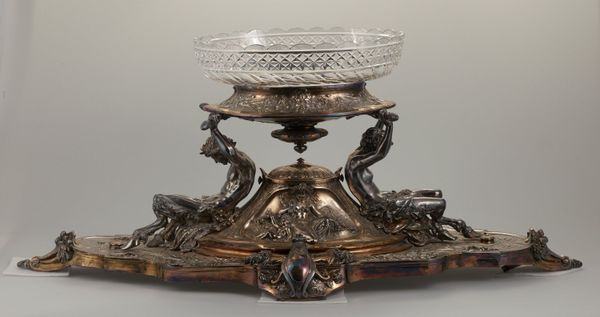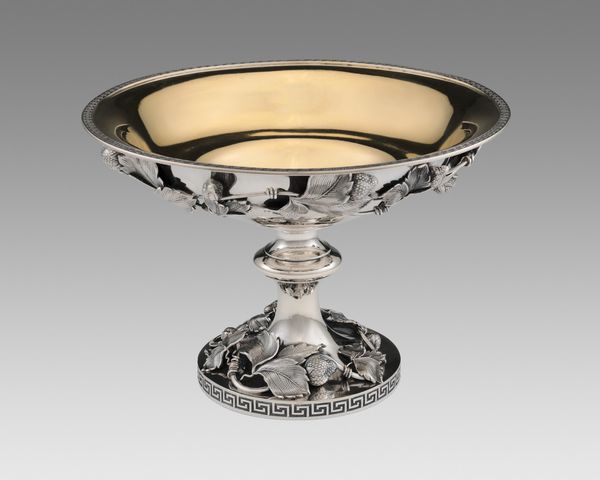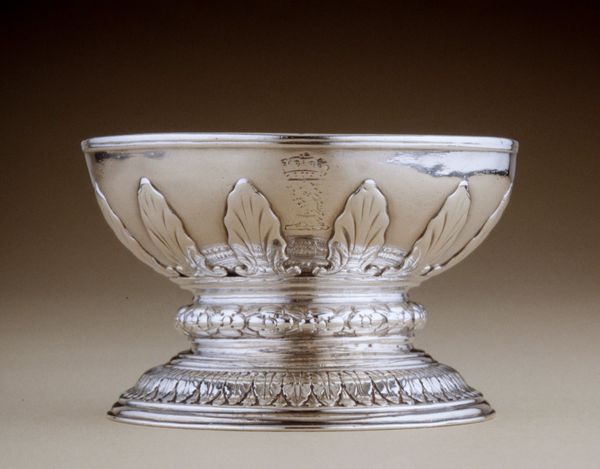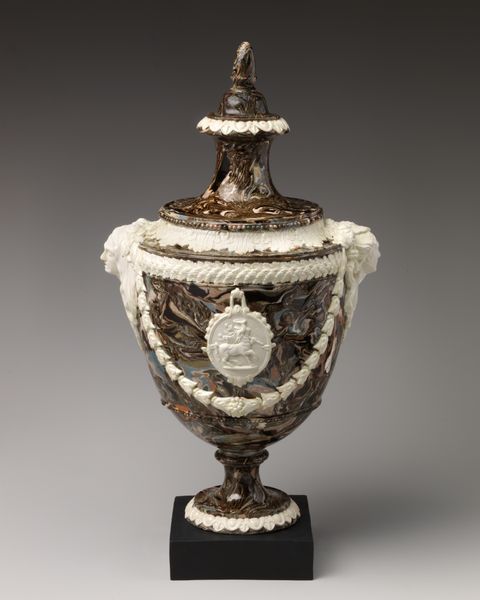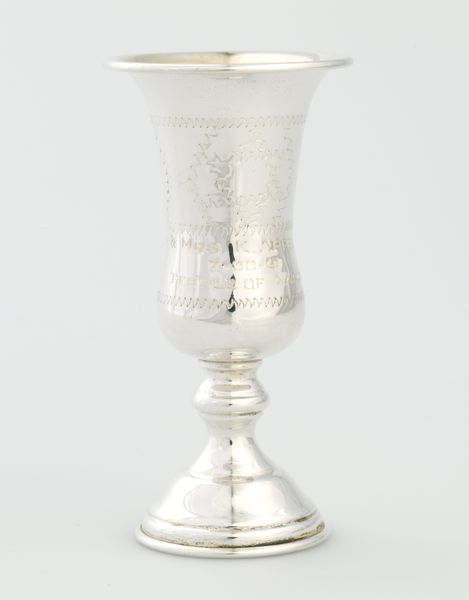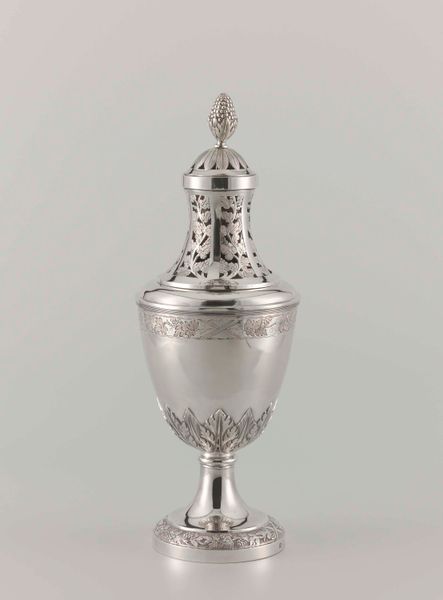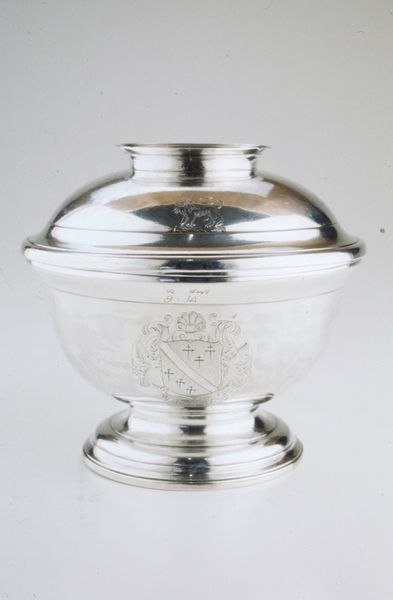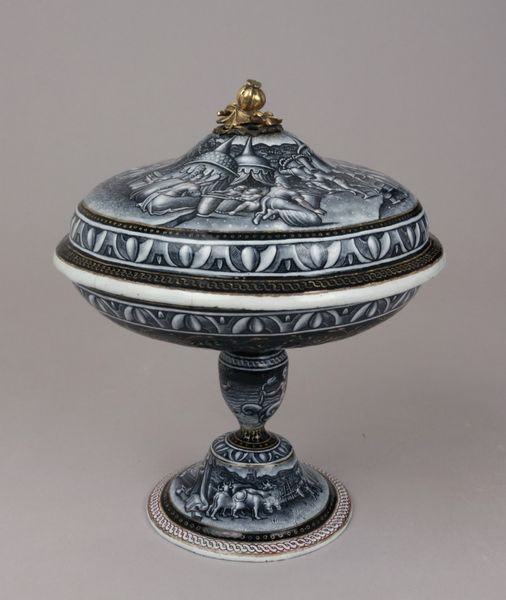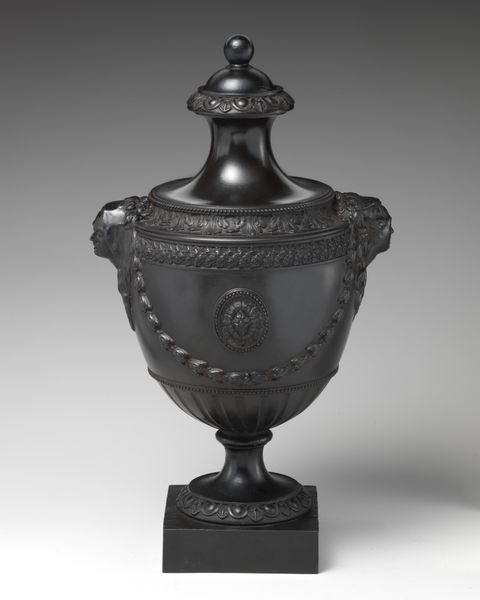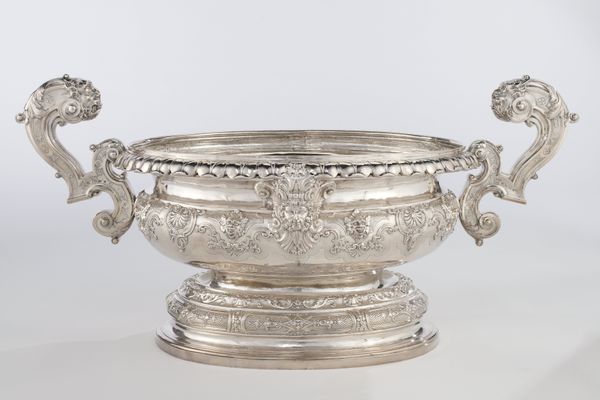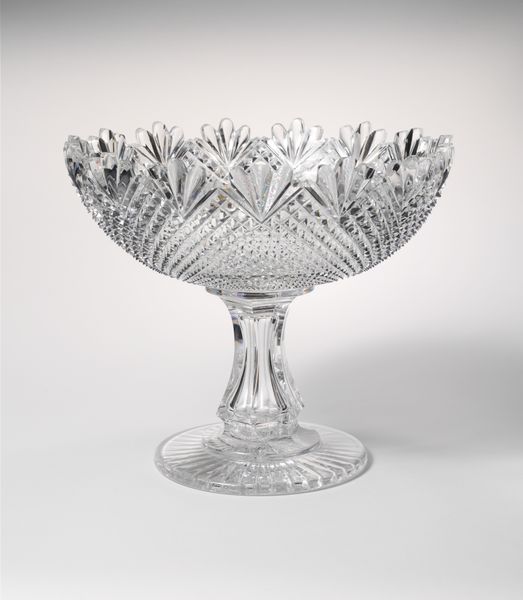
ceramic, sculpture
stone
sculpture
ceramic
11_renaissance
sculpture
Dimensions: 9 3/4 x 7 in. (24.8 x 17.78 cm)
Copyright: Public Domain
Curator: This striking object is a covered tazza, created around the late 16th century, and attributed to Pierre Reymond. It's currently held in the collection of the Minneapolis Institute of Art. Editor: It has a stark beauty, doesn’t it? Almost monochromatic. The ceramic seems sculpted, almost like a ghostly monument. The balance is impeccable. Curator: Reymond was a master of enamel painting on ceramics. Note how the contrasting dark and light fields delineate the narrative scenes, lending a dramatic visual rhythm. It invites decoding. Editor: Absolutely. The imagery is intriguing. I see figures from classical mythology, swirling across the surface. How might its commissioners have used such an elaborately decorated object? It screams elite dining and spectacle. Curator: Precisely. Tablewares became sites for expressing political ideologies. Tazzas like this weren’t just functional, they were meant to stimulate intellectual conversation at courtly gatherings. Each frieze of figures tells a story. Editor: Ah, yes. I can just imagine its patrons signaling allegiances to the erudite ideals of the Renaissance! Tell me more about this use of grisaille, the nearly monochromatic painting that gives this piece so much character. Curator: Reymond utilized the technique with incredible precision to achieve that sculptural feel you described. Its effect is highly theatrical. He was adept at translating Italianate models from painting and printmaking to this more permanent, luxurious ceramic ware. Editor: So, we can place it in a context where both technical skill and learned narrative had considerable symbolic weight. Curator: Indeed. Objects like these weren't merely decorative; they embodied a dialogue between humanist ideals, the artist's vision, and the sociopolitical functions that underscored the lives of their aristocratic owners. Editor: That tension—between the artistry of design and its manifestation of power and place—still emanates from it today, despite the centuries that separate us. Curator: And Reymond's craftsmanship transforms mundane pottery into a vessel teeming with sophisticated dialogue and display, inviting continuous examination of its compositional design.
Comments
No comments
Be the first to comment and join the conversation on the ultimate creative platform.

